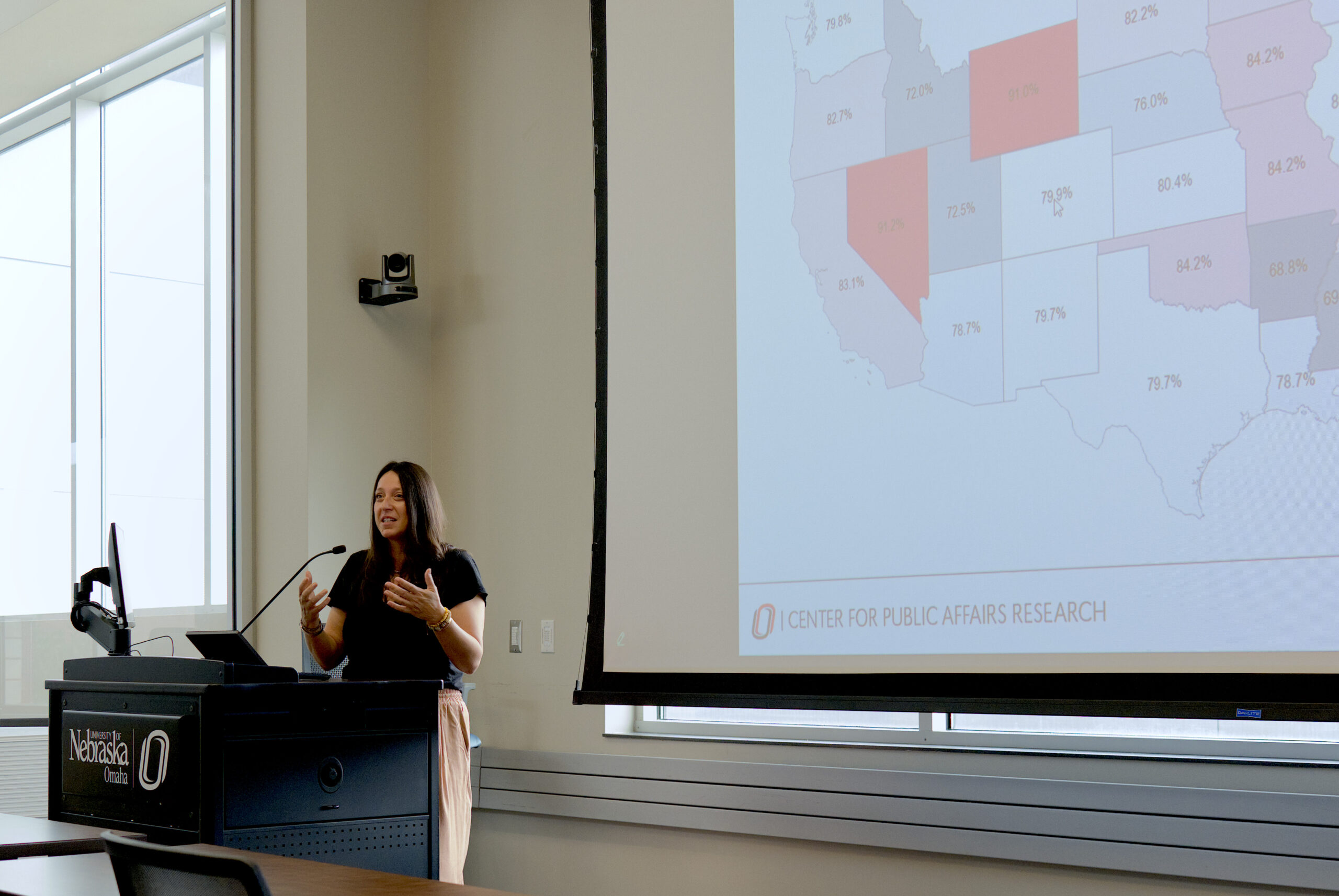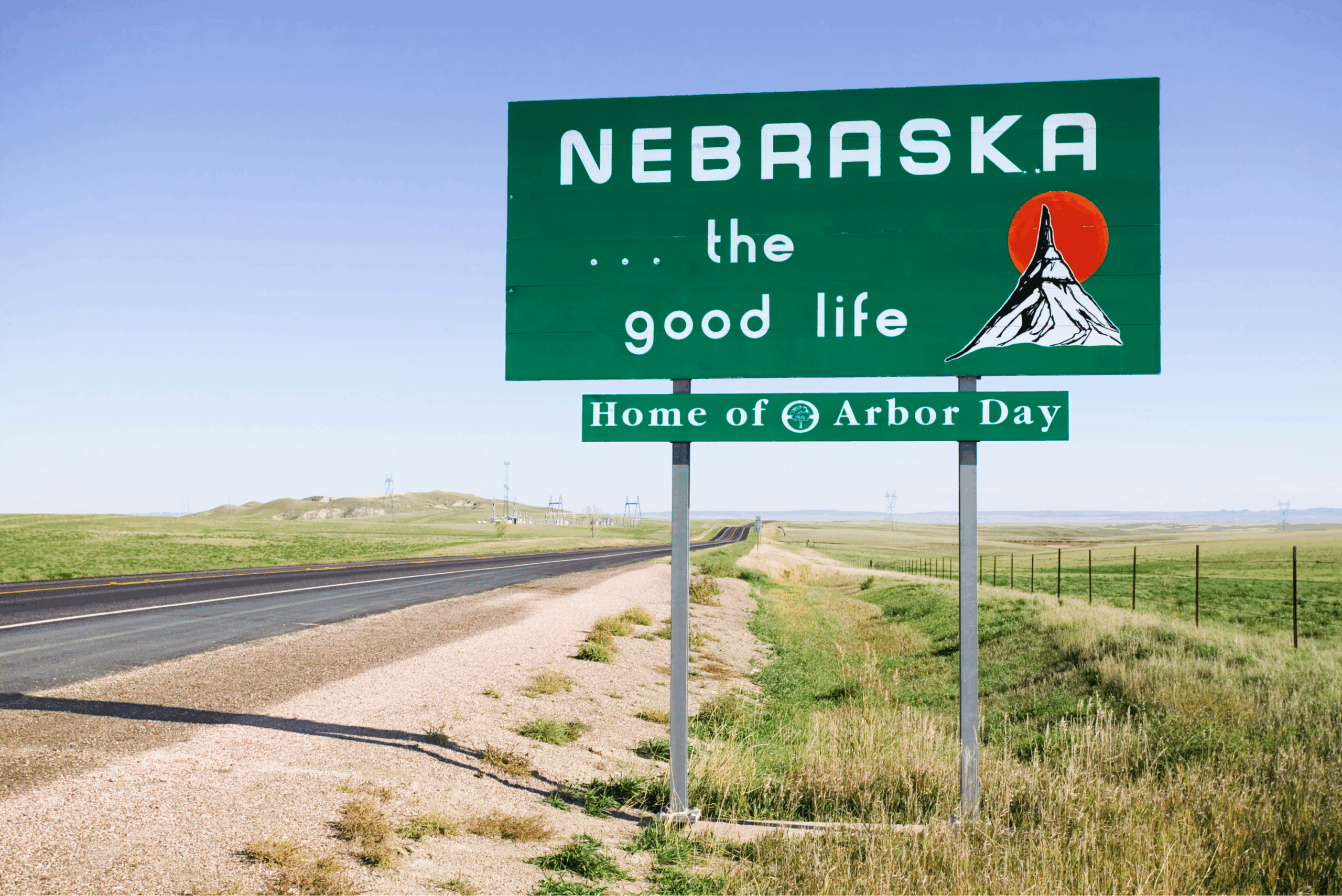Nebraska is slipping into a “two steps forward, one step back” trend when it comes to supporting women in science, technology, engineering and math (STEM) fields. In 2023, women held a little over a quarter of STEM jobs in the state. That’s a slight increase since 2015 and puts Nebraska marginally ahead of neighbors like Iowa, South Dakota, Colorado and Kansas.
But the improvement came with bad news: In 2015, Nebraska women in STEM earned around 86 cents to every dollar made by a man. In 2023, that dropped to 76 cents earned to a man’s dollar.
In the national context, that data is “a little bit more shocking,” said Josie Schafer, director of the Center for Public Affairs Research (CPAR) at the University of Nebraska at Omaha. “We have peer states … that have fewer women in these occupations but are paying them better.”
Nebraska lags behind every single surrounding state on proportional pay for women in STEM.
Schafer unveiled this and other data from the U.S. Census Bureau on July 18 at a Nebraska Women in STEM (NWIS) hybrid webinar. The event marked three years since the release of a CPAR report titled, “Nebraska’s Women In STEM: Listen Then Act.” (Presentation slides with data can be found here.)
The event served as a way to celebrate the work of NWIS, while also bringing clarity to the ongoing issues faced by women in STEM. Over the past three years, across a variety of conferences and events, “we’ve had over 1,300 women and some men participate in our activities, and (we) hope that that continues to grow over the next three years,” said Amanda McGill Johnson, the director of NWIS.
Johnson formerly served in the Nebraska Legislature and currently sits on the Millard School Board.

An open conversation with attendees — roughly 26 people, most tuning in via Zoom — also highlighted the challenging new environment that NWIS has to navigate: A backdrop of federal anti-diversity efforts and funding cuts that further jeopardize support for women in STEM.
Still, attendees were confident about being able to persevere.
“There can’t ever really be a sense of defeatism with women in STEM because there have always been barriers,” said Stephanie Kidd, the communications strategist at the UNeTech Institute, the University of Nebraska-affiliated entrepreneurship organization.
“Things ebb and flow for women in any workplace,” Kidd said, “and there are always things to overcome.”
Data leads to action
When McGill Johnson saw the 2020 documentary “Picture A Scientist,” which focused on the sexism women face in science careers, she wanted to do something to support Nebraska women dealing with the same issues. So three years ago, as the executive director of Nebraska Cures, an advocacy nonprofit for science research and education, she partnered with Bio Nebraska, the bioscience trade organization, to gather data on the state.
“We were fortunate enough to be connected with the Center for Public Affairs Research and find funding to do a study,” McGill Johnson said.
CPAR did in-depth interviews with 48 women working in STEM jobs. The ensuing “Listen Then Act” report documented how women struggled with work-life balance and barriers to career progression, but also how they persevere despite those issues.
“One thing that we thought about as we were conducting the research was the women who we interviewed were the women who made it, so to speak,” said Morgan Vogel, CPAR’s assistant director. “We didn’t talk to women who left STEM because they couldn’t overcome the systemic barriers, or because they didn’t have the support structure in place.”
The report also came with recommendations ranging from increasing professional development and child care support for women, to improving workplace flexibility and education about the barriers women face.
But just talking about issues wasn’t going to cut it. As one study participant said, “At the end of the day, if all we do is share our stories, where have we gone, where have we progressed?”
The report was always geared toward action, and kicked off the formal Nebraska Women in STEM initiative that McGill Johnson leads.

In many ways, NWIS got top marks at the event marking the three-year anniversary of the study.
“There was nothing,” Schafer said. “There was no Nebraska Women in STEM. And now you could just say it to people in this community, and of course, they know what you’re talking about. I can think of very few organizations that have become so well known so quickly.”
Tough times as the work continues
For all the success of NWIS, Nebraska women still face plenty of challenges in STEM — challenges that have been exacerbated by the federal crackdown on diversity efforts and funding. Visibility through data, for example, might take a hit. CPAR lost a National Science Foundation grant focused on researching gender equity in STEM professions. UNO also faces pressure and funding restrictions on work that involves diversity.
Meanwhile, a separate grant to study inclusive entrepreneurship ecosystems from the Kansas City-based Ewing Marion Kauffman Foundation is expiring in September.
But all is not lost, Schafer said. “I was really worried that the atmosphere at the federal level would make other people unwilling to invest in the same type of work.”
“I have not found that to be true,” Schafer said. “If we can do it, we’re going to do it … but it’s looking like everybody wants to do more with less.”
NWIS is also expecting to feel the squeeze. The initiative already has a capacity limit, with McGill Johnson managing NWIS largely solo as part of her work at Nebraska Cures. To be more impactful, NWIS needs more funding and support. Though it isn’t funded directly by any federal or foundation grants, NWIS relies on conference sponsors and registration fees to cover costs.
“The big question (we’re) still trying to figure out is, for the conference being … the revenue generator, will our sponsors stick with us?” McGill Johnson said.
“Probably not at the same level. Some of them will. We have had one that’s almost doubled down, which is awesome and helps me not sweat about it,” she said. “But we are just now embarking on some of those (sponsorship asks) for the conference in 2026.”
For women in STEM, the coming years will bring a continued uphill battle for equal representation and pay in Nebraska. Ultimately, Vogel said, it’s for the good of the state, as women drive innovation.
“So it’s important to be focusing on this and advocating for it, in order to develop that competitive workforce that we want, nationally, globally — and very much so in Nebraska,” she said. “I don’t think it’s controversial for me to say that.”
Lev Gringauz is a Report for America corps member who writes about corporate innovation and workforce development for Silicon Prairie News.



